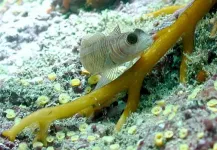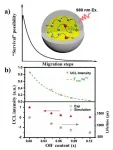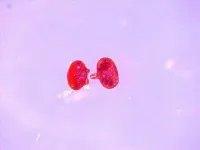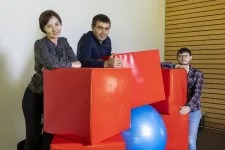(Press-News.org) Current best practices for encouraging more female students to pursue degrees in economics may actually have the opposite effect and worsen gender disparities in the field, a recent study from Oregon State University found.
The study examined whether mass emails telling introductory economic students about promising career and earning opportunities helped increase female participation in higher-level economics courses. But instead, these emails appealed more to male students, increasing male enrollment and widening the existing gender gap. There was no change in the probability of female students majoring in economics.
Researchers say this demonstrates a need for more personalized, deliberate interventions.
"There are no shortcuts to promoting diversity," said study co-author Todd Pugatch, an associate professor and associate director of the economics program in OSU's College of Liberal Arts. "I don't think we went into this expecting there'd be shortcuts or easy fixes, but we also didn't expect there would be such unintended consequences."
Economics has come under increased scrutiny in recent years as it remains a very male-dominated field, with women receiving only about a third of doctorate and bachelor degrees in economics each year, and women accounting for only about 15% of full professors in economics. Research papers have shown evidence of discrimination and bias in economics but the field still needs better ways to combat those disparities, said Liz Schroeder, co-author on the paper and an associate professor of economics at OSU.
"People might be underrepresented in economics for different reasons, and we need to have a deeper understanding of what those reasons are for different groups, and to tailor our interventions accordingly," she said.
In the study, Pugatch and Schroeder had economics professors send emails to 2,277 OSU students in introductory economics courses during the 2018-19 academic year, then tracked whether those students pursued economics later in college. For reference, that year OSU had 83 economics graduates, 18 of whom were women.
There were four tiers of emails: One shared basic information and encouragement based on the description of the economics major; one listed the earnings of economics graduates; one shared the basic information along with a career video from the American Economic Association; and one shared the basic information along with links to OSU video testimonials from graduates.
Roughly 35% of the introductory students who received emails in the study were women. When researchers followed up on students' majors two to four terms later, they found that students who received any version of the email were 2 percentage points more likely to stick with economics -- but the increase was driven entirely by male students. The type of email showed no significant effect on results.
Based on these findings, the researchers estimate that if emails were sent to all introductory economics students, the disparate response would cause the ratio of male to female students in the economics major to nearly double. And among the subset of students earning a B- or better, they predict the male-female ratio would more than double.
Though informational email nudges to students are considered a best practice by the American Economic Association, Pugatch and Schroeder say colleges need to be careful they don't worsen the problems they are trying to solve.
They recommend more time-intensive interventions, such as mentoring, guest lectures by successful alumni and updating course curriculum to better reflect the existence and economic concerns of women.
"One idea that's become popular is that if more women and underrepresented people understand the breadth of economics, they might be more interested in studying it," Schroeder said. "A lot of people think it's only about money and finance and profits, but really it's a study of how people make decisions. There are a lot of social and policy topics that you can study."
The researchers also note the value of students seeing role models who look like them succeeding in the field. OSU recently started a Women in Economics club that allows newer students to connect with upper division students and find a sense of community. And the economics department is working to update its textbooks and other course materials.
Current and future studies will look further into how to support underrepresented students including women, first-generation college students and students of color.
"Even among those of us who want to see change, we don't necessarily know how to bring it about," Pugatch said. "That's why this research is so important, for us to better understand."
INFORMATION:
Using renewable energy to replace fossil energy is now considered the best solution for greenhouse gas emission and air pollution problems. As a result, the demand for new and better energy storage technology is strong.
As part of the effort to improve this technology, a group led by Prof. ZHANG Suojiang from the Institute of Process Engineering (IPE) of the Chinese Academy of Sciences (CAS) recently found that ionophobic electrodes can boost energy storage performance.
Their study was published in the Journal of Materials Chemistry A on May 8.
Electric Double-Layer Capacitors (EDLCs) with ionic liquids (ILs)--as a new type of energy storage device--can fill the gap between the power density of batteries and the ...
Human-driven global change is challenging the scientific community to understand how marine species might adapt to predicted environmental conditions in the near-future (e.g. hypoxia, ocean warming, and ocean acidification). The effects of the uptake of anthropogenic atmospheric CO2 by oceans affects (i.e. ocean acidification) propagate across the biological hierarchy, from changes in the building blocks of life at nano-scales to organism, physiology and behaviour through ecosystem processes and their properties.
To survive in a reduced pH environment, marine organisms have to adjust their physiology which, at the molecular level, is achieved by modifying the expression ...
The great application prospect in biology, medicine, optogenetics, photovoltaics and sustainability has enabled lanthanide ions-doped upconversion nanoparticles to attract widespread attention which derives mainly from their superior anti-Stokes spectroscopic property. However, the relatively low upconversion efficiency remains a major bottleneck on their way of actual applications. Internal OH- impurity is known as one of the main detrimental factors affecting the upconversion efficiency of nanomaterials. Different from surface/ligand related emission quenching which can be effectively diminished by, e.g., core/shell structure, internal OH- is easy to be introduced during synthesis but difficult to be quantified and controlled.
In a new paper published in Light Science ...
PHILADELPHIA--Antibodies aren't the only immune cells needed to fight off COVID-19 -- T cells are equally important and can step up to do the job when antibodies are depleted, suggests a new Penn Medicine study of blood cancer patients with COVID-19 published in Nature Medicine. The researchers found that blood cancer patients with COVID-19 who had higher CD8 T cells, many of whom had depleted antibodies from cancer treatments, were more than three times likelier to survive than patients with lower levels of CD8 T cells.
"It's clear T cells are critical in terms of the early infection and to help control the virus, but we also showed that they can compensate for B cell and antibody responses, which blood cancer patients are likely missing because of the drugs," said co-senior author Alexander ...
PULLMAN, Wash. -- A new fungus strain could provide a chemical-free method for eradicating mites that kill honey bees, according to a study published this month in Scientific Reports.
A team led by Washington State University entomologists bred a strain of Metarhizium, a common fungus found in soils around the world, to work as a control agent against varroa mites. Unlike other strains of Metarhizium, the one created by the WSU research team can survive in the warm environments common in honey bee hives, which typically have a temperature of around 35 Celsius (or 95 F).
"We've known that metarhizium could kill mites, but it was expensive and didn't last long because the fungi died in the hive heat," said Steve Sheppard, professor in WSU's Department of Entomology and corresponding ...
A research group at the University of Córdoba evaluated the commercial mixture formulated in a laboratory and the tank-based mixture of two herbicides to determine which method is more effective in terms of weed control and environmental impact.
In 2017 the company Nufarm Europe proposed to the Higher Technical School of Agricultural and Forestry Engineering (ETSIAM) at the UCO a study of the results of two products having a significant agronomic impact: the herbicides glyphosate and 2,4-D (synthetic auxin). After three years of research, they concluded that the commercial mix produced in the company's laboratories is more effective than manual mixes produced in tanks.
To do this, they used in vivo techniques (tests with greenhouse ...
MAY 26, 2021 -- Researchers from UTSA, the University of Central Florida (UCF), the Air Force Research Laboratory (AFRL) and SRI International have developed a new method that improves how artificial intelligence learns to see.
Led by Sumit Jha, professor in the Department of Computer Science at UTSA, the team has changed the conventional approach employed in explaining machine learning decisions that relies on a single injection of noise into the input layer of a neural network.
The team shows that adding noise--also known as pixilation--along multiple layers of a network provides a more robust representation of an image that's recognized by the AI ...
The Menetries' tiger moth (Arctia menetriesii) is one of the rarest and most poorly studied Palaearctic moth species. Even though its adult individuals are large and brightly coloured, they are difficult to spot, because they aren't attracted to light, they're not active at night, and they fly reluctantly. Currently, the species only inhabits two countries - Finland and the Russian Federation, and is included in the Red Lists of both, as Data Deficient in the former and Vulnerable in the latter.
For 13 years, researcher Evgeny Koshkin of the Institute of Water and Ecology Problems of the Far ...
Men aged 65 and over should monitor their sleep patterns and seek medical advice after a warning from Flinders University experts that disrupted slumber can be linked to cognitive dysfunction.
In a new article published in the Journal of Sleep Research, the Adelaide Institute for Sleep Health research group studied a group of 477 middle-aged and older men's attention and processing speed in relation to their sleep.
The participants from the Florey Adelaide Male Ageing Study undertook cognitive testing and a successful sleep study.
"Less deep sleep and more light sleep is related to slower responses on cognitive function tests," says lead author Jesse Parker. ...
To really appreciate what a team of researchers led by Maksym Kovalenko and Maryna Bodnarchuk has achieved, it is best to start with something mundane: Crystals of table salt (also known as rock salt) are familiar to anyone who has ever had to spice up an overtly bland lunch. Sodium chloride - NaCl in chemical terms - is the name of the helpful chemical; it consists of positively charged sodium ions (Na+) and negatively charged chloride ions (Cl-). You can imagine the ions as beads that strongly attract each other forming densely packed and rigid crystals like the ...






